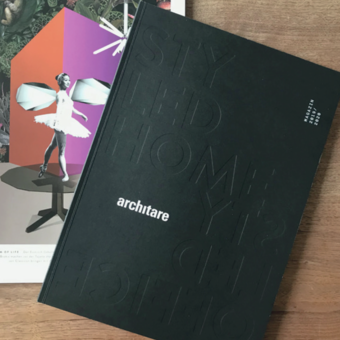A trip to Milan is always worthwhile. This is as true for fashion and design freaks as for friends of the Italian culture and lifestyle. While hundreds of enthusiastic visitors stream to the city every day, the Milanese are only too glad to be able to turn their backs on the provincial capital in their free time. The reason for this: the city – still- offers too little in the way of recreation. There are only a few green belts and public spaces in the densely built-up city.
Green City
This is going to change in the future as provided by Kipar Landscape Architects’ plans. Since Andreas Kipar arrived in the city as landscape planner in 1984, he has been helping to make the design metropolis more attractive by increasing its green areas. As far as he is concerned we should walk much more. Because walking through one’s own city you discover how much quality of life can be found directly in front of your front door, or in your own back yard.
Quality to Kipar means footpaths for young and old, bright streets and shady squares, the scent of trees and shrubs: in short, a sensible combination of nature and culture. Milan has not had much of that, until recently. The historical city centre is densely built up, with 8,000 people living in a square kilometre.
In comparison, Munich has only half as many people with 4,000 per square kilometre and Berlin only 2,500. High time, therefore, to do something about it. In 2003 Kipar and a couple of town planners put their heads together and developed a strategy that other cities could also learn from.
The master plan envisages connecting and further developing Milan’s existing green spaces to form a network of walkways and cycling lanes. Their course is orientated on eight “green rays” that radiate out from the historical city centre in all directions into the surrounding suburban regions. They are crossed by a 72-km long green belt that encloses the design metropolis like a park-like corona.
There is enough fallow land for greening purposes in Milan. The traces of the traditions of car manufacturing and big industry are still clearly visible. Alfa Romeo, Fiat, Maserati and the tyre and cable manufacturer Pirelli were major employers in Italy’s second largest city for decades and shaped the city’s image permanently, leaving behind massive industrial wastelands. The ambitious project “Raggi Verdi” should be completed by Expo 2015. But that will unfortunately probably not happen. Nonetheless, Andreas Kipar and his colleagues at the LAND office are not giving up.
They act as a type of supervisory body that takes care of the consistent return of urban spaces to a green world of experience
The decisive factor here is to join up the existing green spaces with the former industrial plants, which are now being greened. Kipar calls these valuable lifelines “bypasses”.
Whether it’s Frankfurt, Moscow, Paris or Milan – many cities have the same problem: they are like an aged organism. With the help of the bypasses, vital energy is pumped back into the city district. With the increase in quality of life the old building stock also increases in value. To realise his vision, Kipar needs staying power – and lots of fresh air. He is hoping for support from the arts and culture sector, but from the population as well.
The Raggi Verdi initiative already had some dynamic helpers in its view: in order to get a picture of the actual situation in the urban districts, the planners recruited a team of retired Olivetti engineers. These honourable gentlemen explored their city in a whole new way, reporting on dark alleys, dirty areas, crumbling walls and defective sidewalks. At the same time they also discovered wonderful spots, lines of houses and small flower shops that they’d never noticed before, shading trees and forgotten canals. The seniors recorded all their positive and negative experiences in diaries that were evaluated by Kipar and his colleagues at the end.
Much has happened since then. Since 2003, 40, 000 new trees have been planted and the first green veins are already visible throughout the city. There is “countryside” in sight. The same is occurring at the Nuova port: only 100 metres north of Kipar’s office one can see one of his green stage winners around the new glass skyscrapers of Unicredit Bank.
A project like this is never completed
says the landscape architect. How true. Let’s go for a walk!

Photos: ©
Andreas Kipar
Barbara Benz






